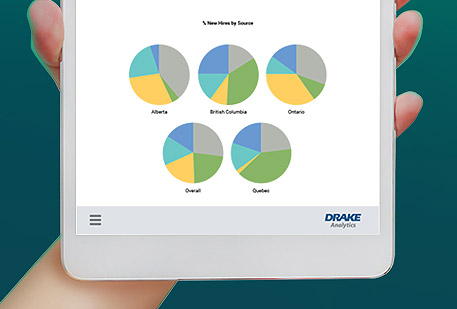Cutting to the chase with cover letters
If you think you don’t need to put much effort into writing cover letters—or don’t need to send them at all because nobody reads them...think again.
For every person who says the cover letter is not important you’ll find another who says it is. Many prospective employers view the cover letter as a way of getting their first impression of you.
The cover letter reveals:
- How well you communicate
- What your experience and qualifications are—briefly
- Your level of professionalism
- Clues to your personality
- How detail oriented you are (i.e., are there typos or other errors?)
To make the best first impression, you need to know exactly what a cover letter is and to put some thought into it before you start writing. You also need to understand what to include–and not to include–and to be aware of some cardinal rules of cover letter writing.
What is a Cover Letter?
A cover letter is an introduction, a sales pitch, and a proposal for further action all in one. It gives the reader a taste of what’s to come–not by simply summarizing the resume, but by highlighting the aspects of your background that will be most relevant to the position. A cover letter also demonstrates that you can organize your thoughts and express yourself clearly and appropriately; in other words, it reflects your communication skills and, to some extent, your personality.
Cover letters are typically one page documents. Like lots of things in life, they have a beginning, middle, and end: usually an introduction saying who you are and why you’re writing, followed by a sales pitch of what you have to offer and then a closing in which you propose steps for further action. These three components often amount to three or four paragraphs, but there are no hard and fast rules about exactly how you break up the information.
Five Things to Think about Before Writing
If you find yourself struck by writer’s block at about the “Dear Mr. or Ms. So and So” point, ask yourself the following five questions. This will help you build a foundation for your letter and will make the actual writing go much more smoothly.
- What is the prospective employer looking for? Which skills, knowledge and experience would be an asset in the job you are targeting?
- What are your objectives? Are you applying for a specific job, trying to get an interview, or simply hoping to get someone to spend 10 or 15 minutes on the phone with you discussing opportunities in general at that organization?
- What are three to five qualities that you would bring to this employer or this job? If you’re responding to a job listing or classified ad, look for “clues” that will tell you what they are really looking for. If you’re not applying for a specific job opening, then think of which skills, knowledge and experience would typically be valued.
- How can you match your experience to the job? What are at least two specific accomplishments you can mention which give credence to the qualities you identified in question number three?
- Why do you want to work for this particular organization or person? What do you know about them? What is it about their products or services, philosophy, mission, organizational culture, goals and needs that relates to your own background, values and objectives?
When you’ve addressed these five issues, you’re ready to put fingers to keyboard and start hammering out that letter.
Anatomy of a Cover Letter
If you’re bewildered by how you’re actually going to write a cover letter, it can help to break the letter down into its various parts and concentrate on just one section at a time.
Here’s what goes into each of the four main sections of a cover letter:
The Beginning
This is where you tell employers who you are, why you’re writing, and how you heard about the organization or the specific opening. The “who you are” part is a brief introduction of yourself with a phrase like: “I am a senior at XYZ University graduating in May with a major in biology.” Just mention the basic facts about you and your situation, choosing the ones that will be most relevant to the employer. The “why you’re writing” part is where you mention which position you are applying for, or what your job objective is if no specific opening has been advertised. Then be sure to tell them how you heard about the organization or the job. You might say, for example, “I saw your posting for a marketing assistant at the Career Services Department of Wilfrid Laurier University.” Or, “I read about the expansion of your East Coast operations in the Globe and Mail and am interested in discussing entry level opportunities you might have available.”
The Middle
The Sales Pitch It’s best to get right to the point. The objective of this part of the letter is to list–either in paragraph form or as an actual list of bullet points–the reasons why the reader should see you as a viable candidate. It’s best to start with a statement that provides an overview of your qualifications, then go into them more specifically, using the examples you identified before you started writing. A typical opening statement might sound something like: “As a political science major and former campaign volunteer for the Liberal party, I offer the following skills and accomplishments.”
The Flattery This is the “why them” section of your letter. It’s where you flatter the reader a bit by commenting on something positive about the organization and letting them know why you would want to work there. You might mention the organization’s reputation, sales record, size, corporate culture, management philosophy or anything else that they take pride in. Prospective employers like to know that you have chosen them for a reason and that they’re not just one of hundreds of companies you’re writing to as part of a mass mailing. (Even if you are doing a mass mailing, you must tailor each letter to “flatter” the reader and show that you’ve done some research on that organization or that person.)
The End
A Request for Further Action Some people think of this final section of a cover letter as the closing, but it’s much more than that. The closing paragraph isn’t just about thanking the reader for taking the time to read your letter or for considering you as a candidate for a job. It’s also about where to go from here–about opening the door to further contact. It’s where you suggest how to proceed, usually by saying that you will call or email the reader to follow up and see if a meeting can be arranged.
The important thing is to end the letter in an assertive, but courteous way by taking the initiative to follow up.
Once you’ve gotten these four sections of the letter completed in terms of content, go back and smooth out any rough edges of your writing and check for typos, misspellings and grammatical errors. Then you’re ready for “Sincerely” or “Best Regards” and your signature, and you’re off and running on the road to a great job.
 CA-EN
CA-EN UK
UK AU
AU US
US NZ
NZ PH
PH ZA
ZA SG
SG HK
HK


